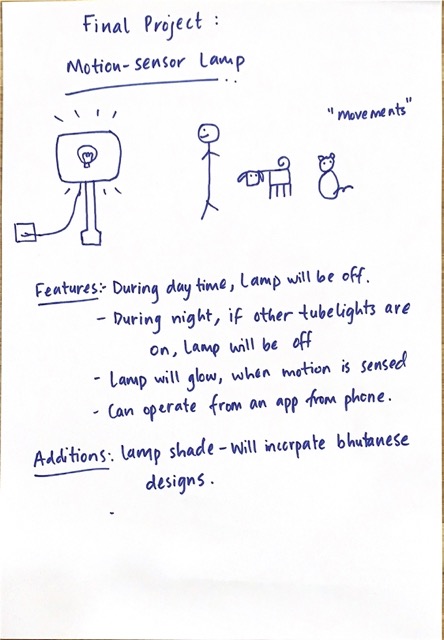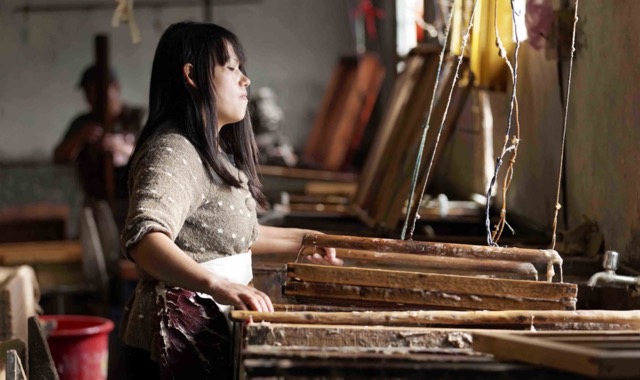Week16- Application and implication
Introduction
Finally, we come to the end. Well, not really the end but almost the end.
Assignment
-
Propose a final project masterpiece that integrates the range of units covered, answering:
- What will it do?
- Who's done what beforehand?
- What will you design?
- What materials and components will be used?
- Where will come from?
- How much will they cost?
- What parts and systems will be made?
- What processes will be used?
- What questions need to be answered?
- How will it be evaluated?
-
Your project should incorporate 2D and 3D design,
- additive and subtractive fabrication processes,
- electronics design and production,
- embedded microcontroller interfacing and programming,
- system integration and packaging
-
Where possible, you should make rather than buy the parts of your project
-
Projects can be separate or joint, but need to show individual mastery of the skills, and be independently operable
Q&A
1. What will it do?
My final project is named Bright Bright lamp. The name is literally what the lamp function as . Firstly t is very bright as it can sense light intensity and motion and turn on and off the LED and secondly because the lamp is bright as it uses LED bulb. The bright bright lamp uses an ESP32 Wroom 32 as an microcontroller. The input used are LDR sensor and a doppler sensor. The output is a solid-state relay which acts as an switch to turn the LED on and off.

2. Who's done what beforehand?
Motion sensor lamps are available in the markets which those are manufactured by the neighbouring countries. We don't have any motion sensor lamps that are manufactured in my country so far.
This is an example of the motion sensor lamps is displayed when I click on an indian shopping site

Since the fabacademy is an open source, I took the advantage of it and looked at the amazing works done by the previous graduates of fabacademy to get a kick-start at how should i proceed.
3. What will you design?
- Design PCB Electronics board using KiCAD
- Design shopbot cut Tensegrity table using fusion360
- Design 3D printed Bulb holder using Fusion360
- Design laser cut Lamp shade holder using Fusion360
- Design vinyl cut brand name sticker using Inkscape
4. What materials and components will be used?
-
For electronic board
- Copper board for the board
- ESP32 Wroom
- Doppler sensor
- LDR sensor
- Relay
-
Filament for 3D printed bulb holder
-
18mm thick wood for shopbot cut tensegrity table
-
Filament to 3D print the bulb holder
-
Acrylic for laser cut lamp shade holder
-
Vinyl roll (yellow colour) for vinyl cut brand name sticker
-
Fishing net to hold the tensegrity table
-
LED lamp
-
Bulb holder
-
Wires-1.5sq mm
-
Plug top
-
Desho paper for the lamp shade


5. Where will it come from?
Most of the components are available in the Fablab. Some were bought from the local market while the desho paper is bought from the traditional store.
6. How much will they cost?
| Sl.no | Name | Source | Quantity | Price | Total |
|---|---|---|---|---|---|
| 1 | Desho paper | Local Market | 2 | $1.25 | $2.5 |
| 2 | Wires(red&black) | Local market | 2m | $0.5 | $1 |
| 3 | Bulb holder | Local market | 1 | $0.31 | $.31 |
| 4 | Bulb(LED) | Local market | 1 | $5 | $5 |
| 5 | Plug top | Local market | 1 | $0.56 | $0.56 |
| 6 | ESP32 Wroom32 | Fablab mandela | 1 | $4 | $4 |
| 7 | PCB - R10k SMD | Fablab Mandela | 2 | $ 0.05 | $0.1 |
| 8 | PCB - R1k SMD | Fablab Mandela | 2 | $ 0.05 | $ 0.1 |
| 9 | PCB - C0.1uF SMD | Fablab Mandela | 3 | $ 0.3 | $ 0.9 |
| 10 | PCB - Led SMD | Fablab Mandela | 2 | $ 0.2 | $ 0.4 |
| 11 | PCB - Connector strips SMD | Fablab Mandela | 1 | $ 1 | $ 1 |
| 12 | Voltage regulator- IC REG LINEAR 3.3V 1A SOT223 | Fablab mandela | 1 | $0.34 | $0.34 |
| 13 | Slide Switch SPDT Surface Mount, Right Angle | Fablab mandela | 1 | $0.92 | $0.92 |
| 14 | Tactile Switch SPST-NO Top Actuated Surface Mount | Fablab mandela | 1 | $0.92 | $0.92 |
| 15 | White PRO Series Tough PLA Filament - 1.75mm (1kg) | Fablab Mandela | 46g | $57/kg | $ 2.62 |
| TOTAL | $20.62 |
7. What parts and systems will be made?
Using the raw materials in the fablab, I designed some parts and made them in the lab itself
- Tensegrity table in shopbot
- Bulb holder in 3D printer
- Lamp shade holder in laser cutter
- Brand name sticker in vinyl cutter
8. What processes will be used?
- PCB production
- Laser cutting
- 3D printing
- vinyl cutting
- Cutting in Shopbot
9. What questions need to be answered?
- The programming code
- Where will the electronics parts be placed
- the lampshade design
- How to integrate all!
10. How will it be evaluated?
- As per the criteria of fabacademy final project, my project should incorporate 2D and 3D design, additive and subtractive fabrication processes, electronics design and production, embedded microcontroller interfacing and programming, system integration and packaging.
- The lamp should only glow only after LDR sensor and the doppler sensor is activated
- An app to control the lamp
- The end product should be asthetic